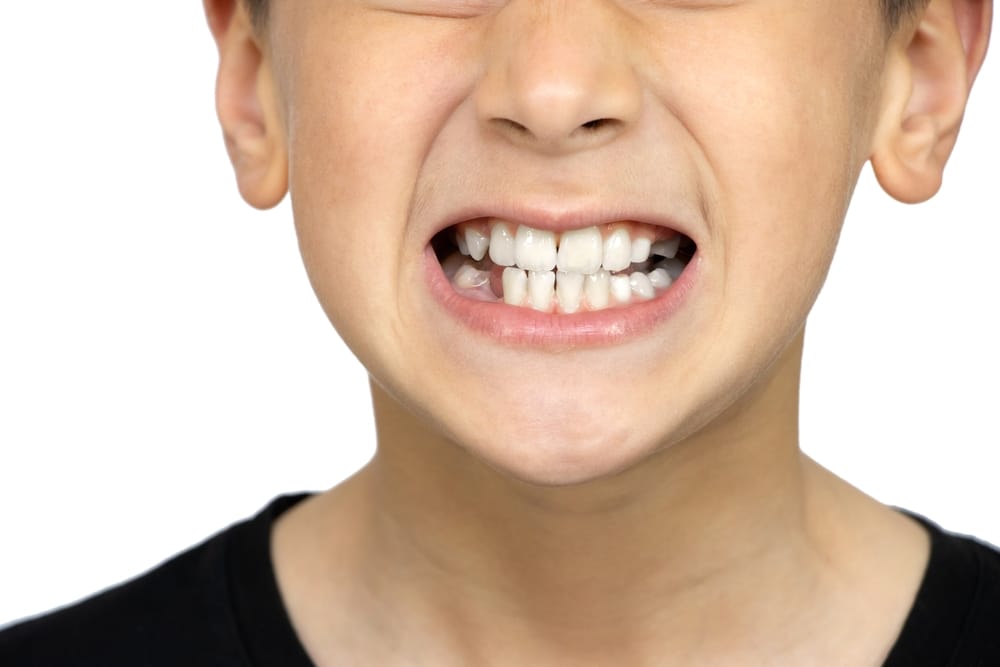Do you often feel out of breath during physical or aerobic activities? Do you have a lung condition that makes it hard for you to breathe normally? If so, you’re not alone. Millions of people around the world struggle with lung problems that affect their quality of life. But there’s good news: exercise can help.
In this blog post, we’ll explore how exercise affects the lungs, how breathing is influenced by activity, and the benefits of exercise for people with and without a lung condition. So, let’s dive in!
How to Increase Lung Capacity: Breathing Exercises
There are specific exercises that can be used to improve lung capacity and respiratory muscle strength.
Aerobic exercises such as running, cycling, and swimming are excellent for increasing lung capacity as they require deep breathing and can improve respiratory endurance.
In addition, high-intensity interval training (HIIT) has been shown to improve lung function and capacity. Specific breathing exercises, such as diaphragmatic breathing and pursed lip breathing, can also improve lung function by strengthening respiratory muscles and increasing oxygen exchange in the lungs.
Incorporating these exercises into your routine can lead to improved overall lung function and respiratory health.

How Does Exercise Strengthen the Lungs?
Exercise plays a vital role in strengthening the lungs by increasing their efficiency and capacity to deliver oxygen to the body.
When the body is engaged in physical activity, such as jogging or cycling, the muscles require more oxygen to sustain their performance. To meet this demand, the lungs work harder, taking in more air and distributing more oxygen throughout the body.
With regular cardiovascular exercise, the lungs become more efficient at delivering oxygen, resulting in an increased overall lung capacity. For example, someone who begins a running routine may initially struggle to run for more than a few minutes due to shortness of breath.
However, with consistent training, the lungs become more efficient at delivering oxygen, allowing the individual to run for longer periods of time without feeling out of breath.
Easy Steps to Protect Your Lungs
Avoiding smoking and exposure to secondhand smoke is an important step in against lung cancer and protecting your lungs. Smoking is a major contributor to lung disease and can severely impact lung function. Other easy steps to protect your lungs include avoiding air pollution and taking care to avoid respiratory infections.
To protect lung function, it is important to avoid the following:
Smoking: Smoking is the most significant contributor to lung disease and can severely impact lung function. Avoiding smoking and exposure to secondhand smoke is crucial to maintaining optimal lung health.
Air pollution: Exposure to air pollution can cause inflammation and damage to the lungs. It is important to limit exposure to pollutants in the air, particularly in urban environments.
Occupational exposure: Exposure to certain substances in the workplace, such as asbestos and silica, can cause lung damage over time. It is important to take appropriate safety measures and protective equipment when working with such substances.
Infections: Respiratory infections, such as the flu and pneumonia, can have a significant impact on lung health. Taking appropriate measures to prevent infection, such as washing hands frequently and getting vaccinated, can help to protect the lungs.
Sedentary lifestyle: A sedentary lifestyle can contribute to poor lung function and respiratory health. It is important to engage in regular physical activity to maintain optimal lung function and overall health.
Stress: Chronic stress can have negative impacts on lung health and function. Managing stress levels through techniques such as meditation, yoga, or deep breathing exercises can promote better lung function and overall health.
By avoiding these factors and taking steps to exercise lung health and maintain optimal lung health, such as engaging in regular exercise and breathing techniques, individuals can improve lung function and reduce the risk of developing chronic respiratory diseases.
Physical Exercise and Lung Health
In addition to improving lung function, regular exercise can have numerous other benefits for overall health and wellbeing. Maintaining a healthy weight, reducing the risk of chronic diseases, and improving mood and mental health are just a few examples of the benefits of regular exercise.
The Benefits of Exercise
The benefits of regular exercise on lung and heart function cannot be overstated. Exercise promotes improved oxygen uptake by the lungs, improved cardiovascular efficiency, and better regulation of blood pressure. Engaging in moderate physical activity can also reduce the risk of developing chronic diseases and improve overall quality of life.
Live a Longer, Healthier Life
Incorporating regular exercise into your routine is key to maintaining overall health and wellbeing. Studies have shown that regular exercise can extend lifespan by up to five years. By taking care of your lungs through exercise and breathing techniques, you can lead a longer, healthier life.
Pursed Lip Breathing
Pursed lip breathing is a breathing technique that can improve lung function and reduce shortness of breath. This technique involves inhaling deeply through the nose and then exhaling slowly through pursed lips, as if blowing out a candle. The pursed lips create a resistance to the airflow, which helps to keep the airways of healthy lungs open and allows for better gas exchange in the lungs.
To practice pursed lip breathing, follow these steps:
Relax your neck and shoulder muscles and breathe in deeply through your nose.
Purse your lips as if you were going to whistle or blow out a candle.
Slowly breathe out through your pursed lips, taking two to three times longer to exhale than you did to inhale.
Repeat the process for several minutes, gradually increasing the length of time you practice.
Pursed lip breathing can be particularly helpful during physical activity or when experiencing shortness of breath. By slowing down the breathing process and creating a resistance to the airflow, pursed lip breathing can help to regulate breathing and reduce the work of the breathing muscles. It can also improve oxygen exchange in the lungs and reduce the amount of carbon dioxide retained in the body.
Incorporating pursed lip breathing into your daily routine can help to improve lung function and reduce shortness of breath. It is particularly helpful for individuals with chronic respiratory diseases such as asthma, COPD, or emphysema. However, it is important to speak with your healthcare provider before starting any new breathing techniques or exercise routines, especially if you have a pre-existing respiratory condition.
Diaphragmatic Breathing Exercises
Diaphragmatic breathing exercises are a type of a breathing exercise technique that can improve lung function and respiratory muscle strength. This technique involves breathing deeply from the diaphragm, rather than shallowly from the chest, which can improve the exchange of oxygen and carbon dioxide in the lungs.

To practice diaphragmatic breathing, follow these steps:
Lie down on your back or sit in a comfortable chair with your back straight and your feet flat on the floor.
Place one hand on your chest and the other on your stomach.
Inhale slowly through your nose, feeling your stomach rise as you fill your lungs with air.
Exhale slowly through your mouth, feeling your stomach fall as you release the air from your lungs.
Repeat the process for several minutes, gradually increasing the length of time you practice.
Diaphragmatic breathing exercises work by strengthening the diaphragm and other respiratory muscles, improving their ability to move air in and out of the lungs. This can lead to increased lung capacity, deep breath, and improved respiratory endurance. Diaphragmatic breathing exercises can also improve overall respiratory function, reducing shortness of breath and promoting better oxygenation of the body’s tissues.
Incorporating diaphragmatic breathing exercises into your daily routine can help to improve lung function and reduce the risk of chronic respiratory diseases. It can also be helpful for individuals with pre-existing respiratory conditions such as asthma or COPD. However, it is important to speak with your healthcare provider before starting any new breathing techniques or exercise routines, especially if you have a pre-existing respiratory condition.
Staying active
Staying physically active and incorporating regular physical activity into your routine is key to maintaining lung and heart health. Even small changes like taking the stairs instead of the elevator or going for a walk during your lunch break can have a big impact on lung health.
Can you increase lung capacity with breathing exercises?
Yes, regularly practicing breathing exercises can improve lung function and increase lung capacity. By improving respiratory muscle strength and endurance, regular breathing exercises can lead to better overall respiratory health.
What are the symptoms of low lung capacity?
Shortness of breath, fatigue, difficulty breathing during physical activity, coughing, wheezing, and chest pain are all symptoms of low lung capacity. If you are experiencing any of these symptoms, it is important to speak with your healthcare provider to determine the best course of action.
It’s important to note that incorporating regular exercise into your routine can be beneficial at any age. In fact, studies have shown that even moderate exercise in older adults can improve lung function and reduce the risk of chronic heart disease.
In addition to physical exercise, maintaining a healthy diet and managing stress levels can also contribute to better lungs healthy overall respiratory health. Consuming foods rich in antioxidants, such as fruits and vegetables, can help to protect the lungs from oxidative stress. Managing stress levels through techniques such as meditation or yoga can also promote better lung function and overall health.
If you are experiencing symptoms of low lung capacity or have pre-existing respiratory conditions, it is important to speak with your healthcare provider before starting a new exercise routine. Your healthcare provider can provide guidance on the types and intensities of exercise that are safe and effective for your specific needs.
- Your lungs can process up to 5 liters of air per minute during exercise – that’s more than 10 times the amount at rest!
- The average person takes around 15 breaths per minute at rest, but can take up to 60 breaths per minute during intense exercise.
- The diaphragm, a large muscle located beneath your lungs, is responsible for 75% of your breathing.
- Breathing through your nose instead of your mouth can help filter out airborne pollutants and reduce the risk of respiratory infections.
- Even moderate exercise can have a big impact on lung function – a recent study found that just 30 minutes of walking per day improved lung function in people with COPD.
Conclusion
In conclusion, regular exercise and breathing techniques are essential for maintaining optimal lung function and overall respiratory health. Incorporating physical activity, muscle strengthening activities such as cardiovascular exercise and breathing exercises, into your routine can increase lung capacity, improve respiratory muscle strength, and reduce the risk of chronic disease. By taking care of your lungs through exercise, diet, and stress management, you can lead a longer, healthier life.
References:
1. American Lung Association. (2022). How Your Lungs Work. Retrieved from https://www.lung.org/lung-health-diseases/how-lungs-work
2. British Lung Foundation. (2019). Exercise and keep your lungs well. Retrieved from https://www.blf.org.uk/support-for-you/exercise-and-your-lungs
3. Centers for Disease Control and Prevention. (2022). Physical Activity and Health. Retrieved from https://www.cdc.gov/physicalactivity/basics/pa-health/index.htm
4. Global Initiative for Chronic Obstructive Lung Disease. (2021). Global Strategy for the Diagnosis, Management, and Prevention of Chronic Obstructive Pulmonary Disease. Retrieved from https://goldcopd.org/wp-content/uploads/2020/11/GOLD-REPORT-2021-v1.1-25Nov20_WMV.pdf
5. NHS. (2021). Benefits of Exercise. Retrieved from https://www.nhs.uk/live-well/exercise/exercise-health-benefits/
6. NHS. (2021). Physical Activity Guidelines for Adults. Retrieved from https://www.nhs.uk/live-well/exercise/physical-activity-guidelines-for-adults/
7. Patel, K. V., & Mapel, D. W. (2019). Exercise and pulmonary rehabilitation for management of chronic obstructive pulmonary disease. Journal of the American Medical Association, 322(8), 784-795. doi:10.1001/jama.2019.10931
8. Smith, T. R., & Marlow, B. (2021). The impact of exercise on lung function. The Journal of Sports Medicine and Physical Fitness, 61(1), 133-140. doi:10.23736/S0022-4707.20.10397-1
9. World Health Organization. (2022). Physical Activity. Retrieved from https://www.who.int/news-room/fact-sheets/detail/physical-activity





